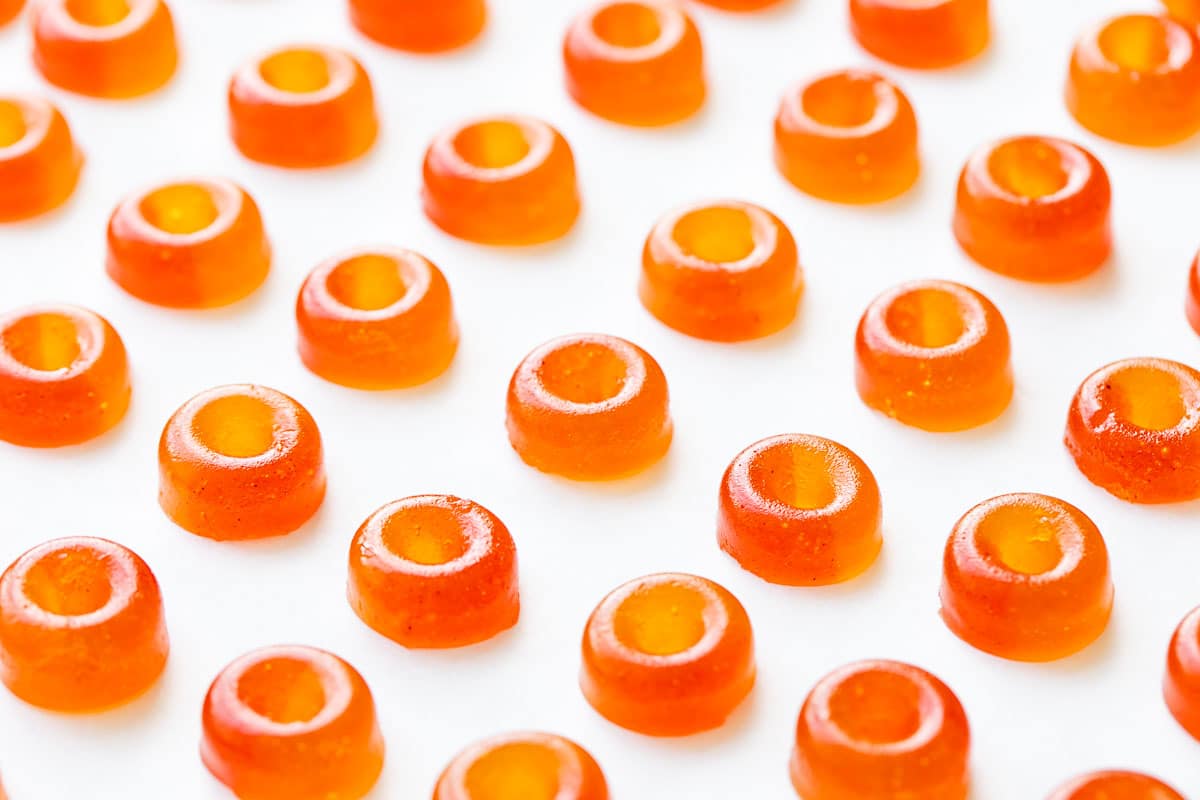How in-store music can play a role in retail media networks
Capable of contextually relevant messaging, and with new programmatic solutions placing it in the booming retail media space, providers say let the Muzak play.

When Kroger set out last summer to find a new provider for the soundtrack that plays in its stores, the grocery chain wanted a fresh sound that would align with its recent brand repositioning.
Coordinating with Vibenomics, the retailer and software company arrived at “On Top of the World,” a 2012 single by the pop-rock band Imagine Dragons. Its lively sound and upbeat lyrics matched Kroger’s “Fresh for Everyone” positioning and became a kind of North Star to build the rest of the soundtrack.
But entertaining customers was only one reason for establishing the new sound at Kroger. The primary goal was to better capture the opportunities inherent in the advertising that plays between the songs. Though music has played in the background at stores for decades, the medium has suddenly become a topic of high interest from retailers, suppliers, tech entrepreneurs and investors, who see it as one way to climb the charts in the booming retail media world.
“With cookies going away and brands focused on the contextual environment, if you’re a CPG looking to reach a principal grocery shopper, how much more contextually relevant can you get?” said Ryan Fuss, senior VP of global media solutions at Stingray, which purchased InStore Audio Network in January, regarding in-store audio. “When I’m driving in my car listening to my favorite radio station, advertising is disruptive to the moment. But when I’m in the store, I’m there to browse and to buy.”
Though primarily thought of as ads placed on a retailer's apps or website, retail media has also bled into out-of-home channels. This comes as the number of places retailers can sell ads has expanded to shelf edges, shopping carts and freezer doors that double as digital signboards. In-store audio, which reaches consumers at the moment they are about to make a purchase, is also benefiting from the digital shift, particularly when offered as a programmatic solution to brands that also sell on retailers' websites and apps.
“With an ad server we can offer programmatic ways for agencies to buy millions of grocery shoppers in the same way they buy eyeballs on a billboard, or a TV or digital ad,” Fuss said. “We’ve seen a trend of retailers seeking differentiated revenue streams—they’re becoming media companies, and as they become media companies we remind them of the technology that’s already installed across their networks. Let’s find a way to monetize the foot traffic, and make it additive to the shopper experience.”
Vibenomics is looking to position itself as part of brands’ strategy to invest in retail media.
“People don’t really believe we’re retail media but we’re in the venue, in front of the shoppers you just targeted like hell to get to the store, so we should really be a part of that,” said Paul Brenner, president of audio-out-of-home for Vibenomics. That’s the biggest challenge we face—opening people’s minds to that.”
The extent to which in-store music can play a role in the retail media revolution may hinge on how marketers ultimately view the medium, experts say. “The challenge for in-store audio is it’s a channel that can easily fall down the cracks,” said Martin Porter, senior VP and out-of-home lead for Dentsu. “There are some times when you look at it and say, ‘That’s not really out-of-home.’ Out-of-home is billboards and radio, and this is not either, so there’s a danger it’s not in anyone’s camp, and can get pushed aside.”
Digital shift
The shift to programmatic buying in channels like in-store audio is helping to open eyes in the agency world, said Dave Etherington, chief customer officer of the advertising software company Place Exchange. “It’s helped drive how it is perceived in the minds of the buyer, and I think that growth was helped by COVID. It allowed people to buy the medium in a way that was flexible—you’re able to activate the buy or stop the buy based on the data that was coming in,” Etherington said.
Kroger, the nation’s largest supermarket chain with more than 2,800 U.S. stores, said the new audio channel from Vibenomics reaches 11 million shoppers daily, and joins a range of efforts to entice consumer packaged goods makers to spend omnichannel marketing dollars to reach them. This includes targeted ads on its app, digital shelf-edge displays, magazine content, and influencer marketing, each a piece of its retail media puzzle. Kroger executives see an enormous opportunity to grow profits in its digital properties, which are supported by a proprietary data analytics subsidiary known as 84.51°. The company banked more than $1 billion from what it called these alternative profit streams in 2021, Chief Financial Officer Gary Millerchip said during a recent presentation for investors.
The company declined to comment for this article, but in a release accompanying the announcement of its deal with Vibenomics made its case behind its omnichannel marketing capabilities. “Vibenomics plays an important part in our strategy to help us win with our customers, accelerate innovation in-store and drive success for the brands we carry,” said Peter Miles-Prouten, senior VP of partnerships at 84.51°.
Get your ticket for the April 5 Ad Age Next: Retail event at AdAge.com/NextRetail.
Indianapolis-based Vibenomics, which also recently landed an in-store contract with Midwest regional grocer Hy-Vee, argues that it is different from rivals in the retail audio space by being natively programmatic, or purchasable using buy-side systems like Trade Desk and Place Exchange. “[Brands] can look in there and say, ‘I want these hours, in these markets, at this price.’ They don’t really need us. That gives them a ton of flexibility so they love it.”
The combination of customer data and programmatic buying is making ads played over the medium more like the one-to-one offers delivered to shoppers’ phones. Companies with stores in multiple regions, like Kroger, have also chosen voiceover talent speaking in the dialects or languages of their customers.
A new beat
The advertising opportunity in recent years has taken what’s long been thought of as “background music” to the forefront for ambitious marketers, said Danny Turner, senior VP of Mood Media, one of the country’s largest providers of in-store soundtracks and the parent of Muzak, the instrumental interpretations of pop songs that once dominated retail environments.
“For years, it was just a matter of checking the box—background music to provide some noise between the rafters of merchandise,” Turner said. “Then we began to understand the power that music had in communicating brand attributes. Now, when we work with our partners, we go in and do a deep dive to discover what makes their brand unique, and we distill that into musical properties. This guides our decisions so that every song in a retail location is guided by who you are and what your brand’s North Star is.”
Some retailers still rely on music solely as a brand amplifier and are hesitant to disrupt that experience with ads, as is the case for the upscale food merchant The Fresh Market, which plays classical music in its stores.
“Classical music is a critical part of The Fresh Market brand,” said Kevin Miller, chief marketing officer of the Greensboro, North Carolina-based retailer. “It’s what our customers expect from us, and enjoy, and is as important as the product. Our customers love the discovery, they love the smell of the orchids, and the lighting, but one thing that stands out from all that theater is the classical music.”
Fearful of disrupting an effective platform for its retail brand, Miller said the chain remains reluctant to explore vendor advertising over its audio networks. Instead, it is using properties like a full-color monthly recipe magazine and signage in stores to bring vendor marketing to shoppers.
Traditionally, music was a revenue-neutral undertaking at Ahold Delhaize’s Stop & Shop, with modest ad proceeds offsetting the cost of the broadcast. But the chain has gotten more sophisticated about how it approaches music, and the medium is now a small moneymaker after aligning in late 2020 with DMI, a provider founded by a former musician, said Janine Mudge, director of marketing operations for the 400-store Northeast supermarket. The chain regularly tests new playlists based on customer data and adjusts its sound based on dayparts and other factors it draws from loyalty data. Ads have been successful, particularly in raising customer awareness of the store’s private brands, which generally come with better margins, Mudge said.
When the music, the messaging, and the timing are right, in-store audio can be extremely effective, its proponents say. But in-store audio sits in an awkward position in the media landscape, often viewed as a so-called “tweener.”
“I think we are a tweener because we may be viewed a little like a media product, and a little bit like a shopper marketing product, and a little like a digital product,” Gary Seem, president and co-founder of InStore Audio Network, acknowledged. “I’m not sure these are good ways to evaluate our business because the media space is no longer a TV-dominated world. The place-based out-of-home space is becoming so important and solutions like InStore Audio Network don’t quite fit into traditional media segments.”
Don’t miss the latest news. Sign up for Ad Age newsletters here.
Accelerating the programmatic marketplace for in-store audio requires dismantling silos and legacy practices, said Michael Provenzano, CEO of Vistar Media, a supply-side programmatic software company specializing in out-of-home. “Brands should be challenging retailers and say, ‘I need you to operate like a full-on, highly technical publisher,’” Provenzano said.
Some of these legacy practices include ads in the space tied specifically to shopper marketing agencies making direct buys. That has caused some confusion and hesitancy among brands, said Dentsu’s Porter, saying some may be wary of the complexity of adding another channel.
“Let’s say I’m a shampoo brand that wants to be in 25 markets and 37 cities in those markets, and I want to be in the retail space,” Porter said. “I think these four markets could do out-of-home audio, and in eight markets I’ll do digital screens by the register, and in this market, it’s refrigerator doors. Put that all together as a plan and the client will look at that and say, ‘Boy, that’s a lot of different things.’ But if you buy a billboard by the side of the road you can get that in any market.”

 JaneWalter
JaneWalter 
































